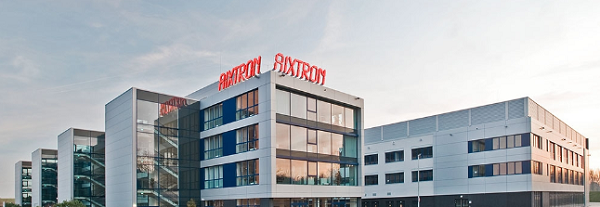AIXTRON announced that the École Polytechnique Fédérale de Lausanne (EPFL) in Lausanne (Switzerland) has purchased a BM NOVO system. This versatile tool which can produce virtually all variations of 2-dimensional materials (2D) required for emerging optoelectronic applications is dedicated to support the University’s research projects coordinated by Prof. Andras Kis and Prof. Aleksandra Radenovic.
 |
|
(Image: AIXTRON) |
AIXTRON’s BM NOVO system uses a unique combination of plasma-enhanced chemical vapor deposition (PECVD) technology and metal organic chemical vapor deposition (MOCVD) technology to enable the growth of high quality 2D materials such as transition metal dichalcogenides (TMDCs) e.g. molybdenum disulfide (MoS2) or tungsten diselenide (WSe2).
TMDCs combine atomic-scale thickness with unique electrical, optical and mechanical properties thus making it a potential material of choice to be used in optoelectronic, electronic, energy storage, spintronic, sensing and even in DNA sequencing applications. Considering these wide range of capabilities, the new BM NOVO was developed to enable customers to solve critical TMDCs deposition challenges and at the same time to provide the reliability required to develop cutting edge applications.
Prof. Andras Kis, one of the globally leading experts for 2D materials research, comments: “AIXTRON’s new BM NOVO system will provide the flexibility and reliability that are required to advance our research which focuses on the investigation of electrical properties, fundamental physics and practical applications of 2D materials such as TMDCs.”
Prof. Aleksandra Radenovic who leads the research on 2D materials for biophysics at EPFL, says: “We are looking forward to the cooperation with AIXTRON as the company’s innovative new platform will support our research in the field of single molecule biophysics which includes the further development of techniques and methodologies based on optical imaging, biosensing and single molecule manipulation.”
The versatile BM product line has a proven track record in the R&D market offering customers the innovative nanomaterial deposition technology combined with unparalleled reproducibility, process control and uniformity to drive application development.












